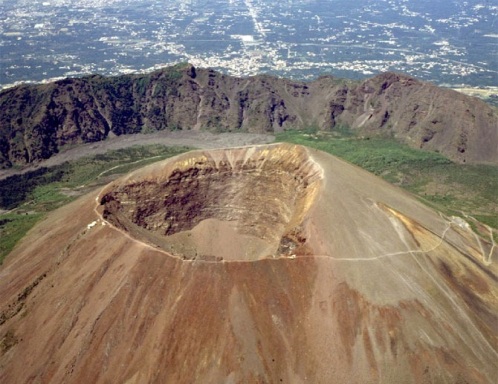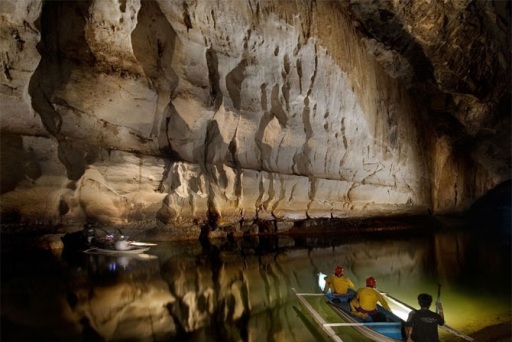Most Tourism Place in our beautiful Planet
Part # 2
Tourism is travel for recreational, leisure or business purposes. The World Tourism Organization defines tourists as people who "travel to and stay in places outside their usual environment for more than twenty-four (24) hours and not more than one consecutive year for leisure, business and other purposes not related to the exercise of an activity remunerated from within the place visited.
Tourism has become a popular global leisure activity. In 2008, there were over 922 million international tourist arrivals, with a growth of 1.9% as compared to 2007. International tourism receipts grew to US$944 billion (euro 642 billion) in 2008, corresponding to an increase in real terms of 1.8%.
1. Iguazu Falls
[Argentina & Brazil]
Iguazu Falls, in Iguazu River, are one of the world’s largest waterfalls. They extend over 2,700 m (nearly 2 miles) in a semi-circular shape. Of the 275 falls that collectively make up Iguassu Falls, "Devil’s Throat" is the tallest at 80 m in height.
Iguazu Falls are on the border between the Brazilian state of Paraná and the Argentine province of Misiones, and are surrounded by two National Parks (BR/ARG). Both are subtropical rainforests that are host to hundreds of rare and endangered species of flora and fauna.
2. Vesuvius
[Italy]
Mount Vesuvius is a volcano east of Naples, Italy. It is the only volcano on the European mainland to have erupted within the last hundred years, although it is not currently erupting.
Vesuvius is best known for its eruption in AD 79 that led to the destruction of the Roman cities of Pompeii and Herculaneum. It has erupted many times since and is today regarded as one of the most dangerous volcanoes in the world.
3. El Yunque
[Puerto Rico]
El Yunque National Forest, formerly known as the Caribbean National Forest, is located on the island of Puerto Rico. It is also the name of the second highest mountain peak in the Forest.
El Yunque is the only tropical rain forest in the United States National Forest System.
4. Galapagos
[Ecuador]
The Galapagos Islands are an archipelago of volcanic islands distributed around the equator, 965 kilometres west of continental Ecuador in the Pacific Ocean.
The islands are all part of Ecuador’s national park system. They are famed for their vast number of endemic species
5. Uluru
[Australia]
Uluru (Ayers Rock) is one of Australia’s most recognizable natural icons.
The world-renowned sandstone formation stands 348 m high above sea level with most of its bulk below the ground, and measures 9.4 km in circumference. Uluru appears to change color as the different light strikes it at different times of the day and year.
6. Milford Sound
[New Zealand]
Milford Sound, located in the southwest of New Zealand’s South Island, is located within the Fiordland National Park. It runs 15 km inland from the Tasman Sea and is surrounded by sheer rock faces that rise 1200 m or more on either side.
Among its most striking features are Miter Peak, rising 1,692 m above the sound, the Elephant at 1,517 m and resembling an elephant’s head, and Lion Mountain, 1,302 m, in the shape of a crouching lion. Lush rain forests cling precariously to these cliffs, while seals, penguins and dolphins populate the water.
7. Yushan
[China]
Yushan, part of Yushan National Park, is a central mountain range in Chinese Taipei and it also the name of the highest point of the range. It is also called Jade Mountain and its height is 3,952 m above sea level.
The park is also known for its diverse wildlife and ecology. The environment around Yushan itself spans from sub-tropical forests at its base to alpine conditions at its peak.
8. Grand Canyon
[United States]
The Grand Canyon, created by the Colorado River over a period of 6 million years, is 446 km long, ranges in width from 6 to 29 km and attains a depth of more than 1.6 km.
During prehistory, the area was inhabited by Native Americans who built settlements within the canyon and its many caves.
9. Table Mountain
[South Africa]
Table Mountain is a flat-topped mountain forming a prominent landmark. It is next to the city of Cape Town in South Africa.
Table Mountain is an important tourist attraction, with many visitors using the cableway to take a ride to the top. The mountain forms part of the Table Mountain National Park.
10. Puerto Princesa Underground River
[Philippines]
The Puerto Princesa Subterranean River National Park is located about 50 km north of the city of Puerto Princesa, Palawan, Philippines. It features a limestone karst mountain landscape with an 8.2 km. navigable underground river.
A distinguishing feature of the river is that it winds through a cave before flowing directly into the South China Sea. It includes major formations of stalactites and stalagmites, and several large chambers. The lower portion of the river is subject to tidal influences.
The underground river is reputed to be the world’s longest. At the mouth of the cave, a clear lagoon is framed by ancient trees growing right to the water’s edge. Monkeys, large monitor lizards, and squirrels find their niche on the beach near the cave. Article Source: Fulldhamaal








































































